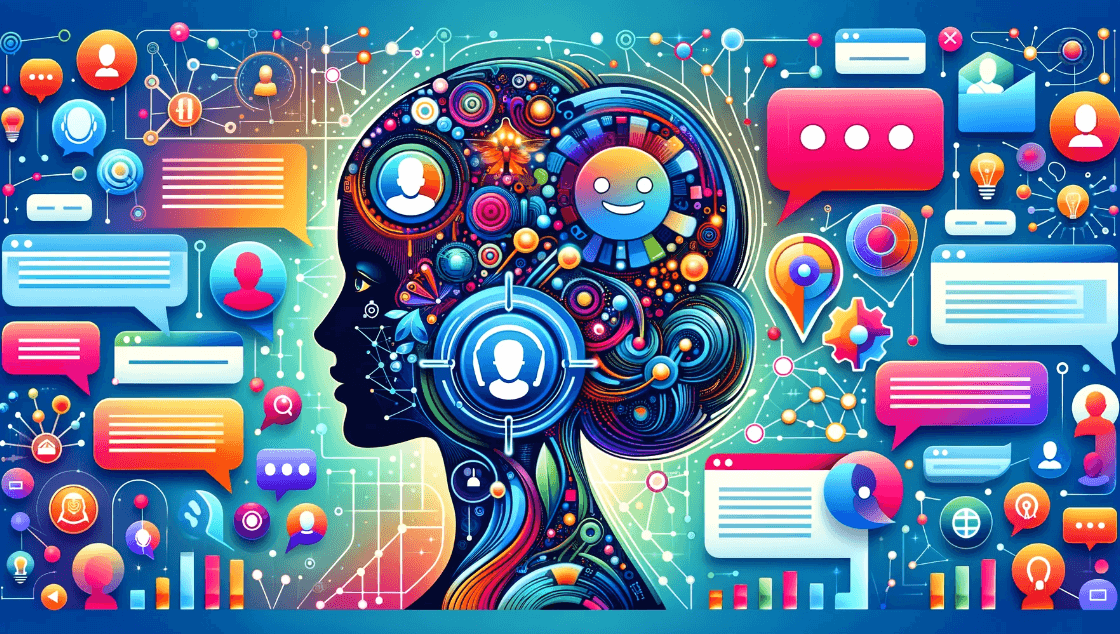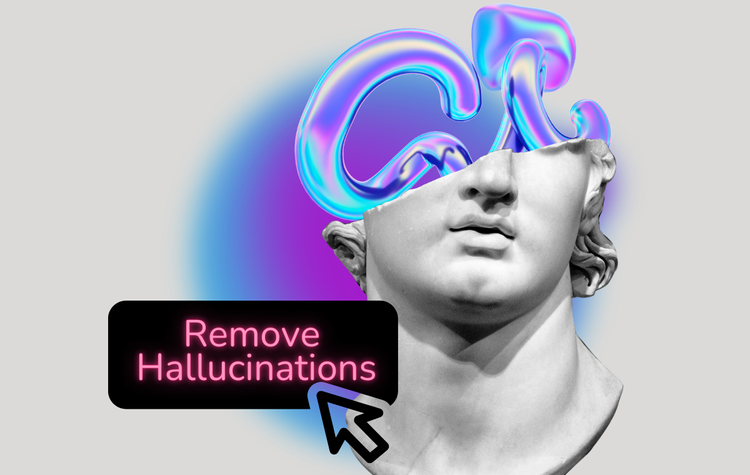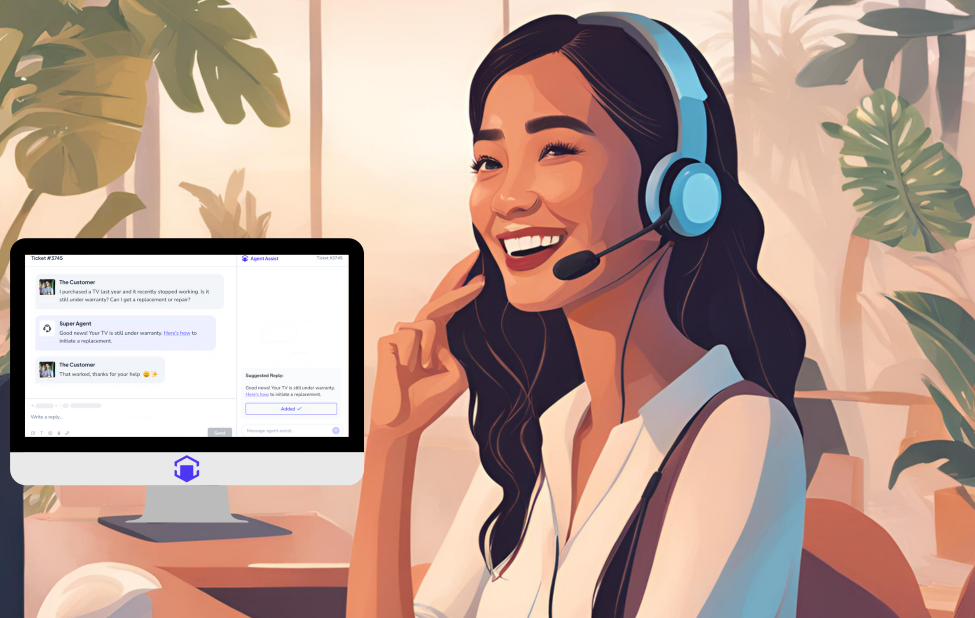How to Implement Generative AI for Customer Service
Generative AI for customer service can implemented in many different ways. Gleen AI is the fastest and most secure way for CS teams to adopt generative AI. And, Gleen AI doesn't hallucinate.

In a recent conversation with WSJ, Salesforce AI CEO Clara Shih said, “AI isn’t only destined to give customer service a facelift. It’s set to overhaul it completely.”
I agree with that! And the advent of ChatGPT, a generative AI-based chatbot with amazing capabilities, has proven that generative AI for customer service is the future. It generates human-like responses based on 175 billion parameters and 96 layers of neural networks.
It is not an old rule-based chatbot that provides an answer to a query by matching it in a database and finding an answer based on if-then logic. Neither is it like a conversational AI-based chatbot that generates responses based on the datasets it is trained on.
A generative AI chatbot thinks like a human, based on the patterns it learned in training, and improves over time with every interaction. That’s why it is so competent. It understands human queries, responds like a human, and improves like a human.
Currently, most interactions between humans and AI chatbots are happening in the customer service industry.
According to a recent survey, 88% of users had at least one conversation with a chatbot. And IBM reported that businesses can save up to 30% on their customer support costs with chatbots.
If you are also planning to use the most competent generative AI chatbot to transform customer service for your company, this post will help you learn how to implement a powerful generative AI chatbot like ChatGPT for customer service.
We will start with the basics of generative AI.
What is Generative AI?
Generative AI is the branch of artificial intelligence that generates various types of content, including text, imagery, audio, and synthetic data. It is based on the large language models (LLMs).
How Does Generative AI Work?
Generative AI uses a combination of technologies: natural language processing (NLP), machine learning (ML), and large language models (LLM).
I will not go into the details of how generative AI works because we have curated a dedicated article on it, “The Ultimate Guide to Generative AI.” But I will give you a basic idea of how a generative AI chatbot works.
When you enter a prompt, it acts like an input for the chatbot. The chatbot converts the input into a language that can be understood by the AI model. The AI model uses neural networks to identify patterns, understand them, and generate a response based on the learned patterns in training on datasets. Based on the user feedback, it trains itself for improved responses.
How Generative AI is Used in Customer Service?
Generative AI in customer support is deployed in 2 primary ways:
- As a generative AI chatbot to help customers with queries without human intervention
- As a generative AI software to assist customer support agents in finding information and drafting responses
As a chatbot, generative AI for the customer service industry can help customers find consolidated answers to queries rather than guiding them to ‘Help’ articles, take actions on the account, escalate the chat to live agents, and more.
Customer support generative AI applications can interact with customers in real time or not, like when responding to emails.
Pros & Cons of Generative AI in Customer Service
Generative AI chatbots do the same job other rule-based chatbots do. It is just that there is a difference in competency. Have a look at the pros and cons of generative AI chatbots for customer service.
Pros of Generative AI
No need to maintain rule-based logic
Generative AI chatbot does not require you to maintain a decision tree, script, or set of rules for each possible interaction. You just need to train the bot on the dataset. It will use the knowledge base to understand and generate relevant responses.
More human
A generative AI chatbot is more human than a rule-based chatbot. It can detect the tone, respond in an engaging way, be more empathetic, and be trained to personality consistent with the brand.
Collect feedback and improve
Generative AI bot makes consistent improvements based on the feedback from the users and admin. It collects feedback, automatically updates the knowledge base, and generates improved responses.
Handle ambiguous queries
Rule-based chatbots cannot understand inputs beyond their database. However, generative AI chatbots can understand and provide meaningful replies even when user inputs are not explicitly clear.
Provide multi-language support
Generative AI chatbot can automatically recognize a foreign language and respond in that foreign language. It allows you to provide global support and scale cost-effectively.
Cons of Generative AI
Can hallucinate
The biggest trouble with Generative AI chatbots is they can hallucinate. It means they can make up facts. It is because they make predictions based on the learned patterns. And sometimes, these bots can misunderstand the context based on the wrong statistics predictions.
Expensive to build
Generative AI chatbots are more expensive to build than rule-based or conversational AI-based chatbots. But it can justify the cost with its advantages.
Different ways of Implementing Generative AI in Customer Service
Generative AI has become synonymous with ChatGPT, a model developed by OpenAI. Many people think of ChatGPT when someone says Generative AI, but it is much more than that.
However, due to the sophistication of the model and years of training, ChatGPT is the most powerful solution out there. But it has its concerns. So, now, we will look at the different ways you can implement Generative AI for customer service.
1. Assist your support agents with ChatGPT
It is the most simple way. Just let your customer service agents use ChatGPT to write emails and create chat replies. It will only save time for your customer agent, but will not reduce the burden of customer tickets from their shoulders.
It is free and easy but comes at hidden costs. For example, all questions and responses generated by ChatGPT can be used by Open AI for training.
The public ChatGPT is not trained on your company’s specific data. So any answer it creates needs to be modified significantly by agents before being sent to customers.
And it has a probability of hallucinating. Agents will need to detect hallucinations in responses.
2. Subscribe to ChatGPT Enterprise
If you want to own and control your business data, subscribe to ChatGPT Enterprise. It is a paid plan of the ChatGPT.
OpenAI says that ChatGPT enterprise does not train on your business data or conversations. Its models don’t learn from your usage.
ChatGPT Enterprise is also SOC 2 compliant and all conversations are encrypted in transit and at rest.
So, your data is private, but you have all the rest of the issues of the public ChatGPT.
3. Build a custom GPT
The next option is to create a custom ChatGPT. The difference between public ChatGPT and custom ChatGPT is you can upload company-specific knowledge to create your custom GPT. It can have a more specific response, tone, and style.
But, the problem with it is that the amount of knowledge you can upload is very limited. Above all, you can't monitor the performance of GPTs and give feedback to the responses.
Also, there are chances of GPTs getting hacked due to a lack of security. So, you can't put proprietary knowledge at stake.
4. Build your own generative AI chatbot
If you do not want to go the ChatGPT route, you can purchase the GPT-3.5 or GPT-4 API and build your own ChatGPT. You can train the model on an unlimited amount of company proprietary data while ensuring the safety of data.
The only challenge is you need to build and maintain the application. For that, you need resources and a dedicated engineering team. Also, you have to solve the hallucination problem. All of this can be quite an expensive endeavor for a small business.
5. License a Generative AI SaaS Application like Gleen AI
If you want the privacy of your own chatbot but do not want the struggle of building and maintaining it, you can license a Generative AI SaaS application. No need to write codes, maintain the application, and solve the hallucination problem. Everything comes out of the box.
This is the best solution for organizations who care about data security and quality of customer service. If that is the case with you, I would suggest you check out the award-winning generative AI SaaS application, Gleen AI.
What is Gleen AI?
Gleen AI is very similar to ChatGPT. Here's how:
- It is trained on GPT-3.5 or GPT-4.0 LLM
- It has a conversational interface and facilitates human-like conversations
- It understands context, answers queries, and provides relevant responses.
This makes it highly effective for automated customer interactions.
Why choose Gleen AI?
Gleen AI is a ready-to-use app that can be trained on your data with hallucinations solved out of the box. No coding is needed. No machine learning/AI skills are needed. Just upload an arbitrary amount of company-specific knowledge to it. And it is ready to run your customer service without human intervention.
Pros of Gleen AI
- Pre-integrated with all support channels: email, live chat, Slack, Discord, social media, social media ads
- Pre-integrated with leading help desks, including Zendesk, Freshdesk, Hubspot, Salesforce
- It can detect foreign languages and respond in the same language to maintain communication with a global customer base
- SOC 2 Type 2 compliance is in progress, your knowledge will be kept secure & private
- Can use action Bots to integrate with other enterprise systems to enable customer self-service
- Can clone bots and make slight modifications to the knowledge base, allowing you to create customer-specific or segment-specific chatbots
- Can see all questions and answers that go into Gleen AI
- Collects feedback from both users and admins
- Improves over time based on feedback
- Automatically re-ingests knowledge to keep responses up-to-date
Cons of Gleen AI
The only con is, Gleen AI is probably not on your list of pre-approved vendors, and will take some lead time to make that happen.
Request a demo of Gleen AI, or create your own free generative AI chatbot for customer service now with Gleen AI.



